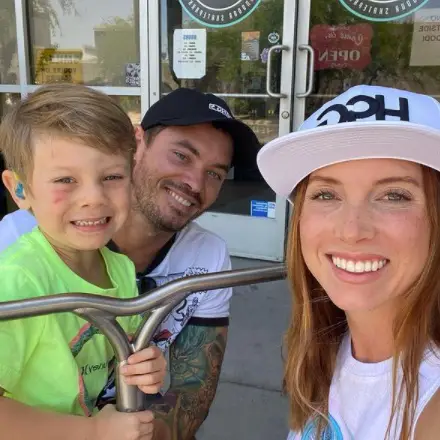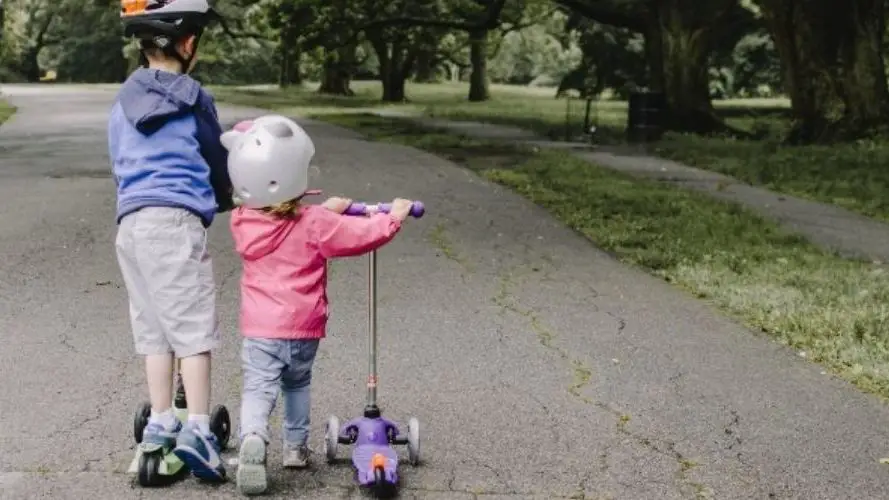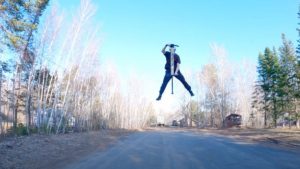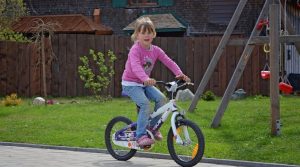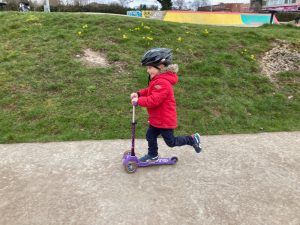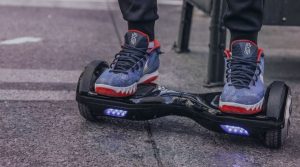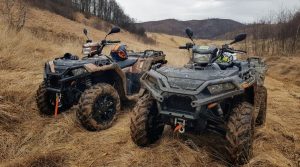Kick scooters rock! But, honestly, they are involved in plenty of child injuries each year. According to the Consumer Protection Safety Commission, thousands of kids land in ER after scooter accidents each year. 1CPSC Reports as Scooter Sales Skyrocket, Injuries Soar
cpsc.gov/newsroom/news-releases/2000/cpsc-reports-as-scooter-sales-skyrocket-injuries-soar
Does this mean you should ditch your kid’s wheels?
Heck, no!
But all parents need to understand the risks and know what essential safety measure are required to keep your kid safe.
We teamed up with Matthew Haines, father of pro scootering prodigy, Krazy Kai, to give you some guidance on sensible scootering rules and safety gear.
Let’s get to it!
Use a properly sized scooter
A properly sized scooter is the first safety priority. Kids riding ill-sized scooters leads to more falls and injuries. This is actually the main reason why the handlebar heights are adjustable on most kids’ models.
So make sure your child rides an appropriate scooter for their age and height.
- Toddlers aged 2 to 3. Tend to ride best on light, stable, appropriately weighted models with three wheels and handlebars that reach waist height.
- By the age of 5. Kids are likely ready for a 2-wheel scooter. They are inherently less stable, but for confident kids, they handle more deftly, turn more sharply, and can be ridden faster.
- Prioritize wheel size if your youngster frequents bumpy surfaces (120mm or above)
- By the age of 8. Some kids are ready to trade kick scooters for pro scooters or electric ones
This is a typical rule of thumb. Your kids experience and capability will also determine what scooter they feel most comfortable on. Just don’t push them to progress faster than they are ready.
Related: 17 Reasons Scooters Make Kids Healthier, Happier and More Confident
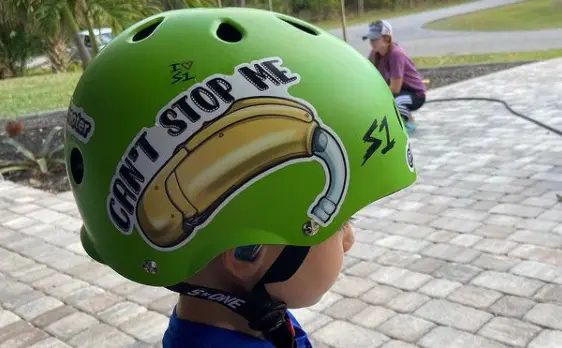
Invest in quality scooter safety gear
Avoid toy-like or cheap safety gear and opt for certified models. That way your kid will be maximally protected when they take a tumble. Plus, they’ll look just as cool!
Certified helmets
Helmets sporting fun cartoon characters or extra ribbons may look great, but the most important thing we recommend is a certified helmet.
When children come off their scooters they can come down hard. Certified helmets are the best protection against head or brain injuries. Period.
“We ditched our Walmart helmet (as cool as the Mohawk and glow in the dark dinos were) for a certified helmet as soon as we learned the difference.”
Matthew Haines, father of 4-year-old scooter prodigy, Krazy Kai
In case you’re wondering, Matt Haines and Kai opt for helmets made by the S1 Helmet Co. They also highly recommend Pro-Tec as a great helmet manufacturer. Matt says, “they are certified and very active in the community, supporting riders of all ages and sports. I can’t recommend them enough.”
Long sleeves and pant
Simple but effective. Long sleeves and pants avoid many scratches and scrapes.
Knee pads and elbow pads
Often passed over by parents or kids eager to rush out the door, these safety accessories have saved many a broken bone. Make them mandatory for your little one.
“I recommend 187 killer pads. They’re the industry norm and they’re very tough, and have sizes from adult all the way down to a size that fits Kai.”
Matthew Haines
Avoid wrist pads
While this may be counterintuitive, wrist pads actually interfere with a child’s ability to properly grip the handlebars. This can actually lead to more falls.
As an alternative, Matt recommends they wear riding gloves.
Riding gloves
These protect kids from grazed knuckles and palms. There is a wide variety available, but anything with knuckle pads and padding on the palms (but not too thick) is pretty good.
Here are some examples:
https://www.seibertron-outdoor.com/product/dirtclaw-youth/
Hip pads
If your child is getting into stunt riding at the local skatepark, then hip pads are a must. They provide padding for legs, hips, pelvis, and more, and you put them on underneath long pants.
Matt recommends Tortoise Pads, which are the industry norm, but points out that don’t have sizes small enough to fit very small kids, like Kai (aged 4). For littlies he suggests skiing or skateboarding pads, which you can pick up at Walmart.
Related: 5 Pro YouTubers Your Scooter Kid Will Love
Scooter riding safety tips
Bicycle safety tips are as appropriate for scooters and this short, animated YouTube video can introduce your child to the subject even before you discuss tips below:
- Have your child test drive several models before buying. Keep the receipt, just in case.
- Read the box to double check age recommendations posted on the manufacturer’s label.
- Look for awards, certifications and other recommendations given by safety counsels and recognized authorities.
- Be vigilant about safety helmet conditions. Check it for strap, surface and interior wear repeatedly.
- Instill in your child the need to wear shoes at all times. Even if you live in Florida!
- Make a list of places to avoid, like hills, steps, curbs, gutters and obstacles that can prove hazardous. Escort Junior to examples so images imprint on his brain.
- Attend to your child’s scooter tires as often as you do your automobile’s rubber.
- Supervise your child if you know he or she is prone to mimic stunts seen on videos or show-off siblings.
- Make scooter riding a “non-earbud” sport. If he’s listening to music, how will he hear approaching danger?

